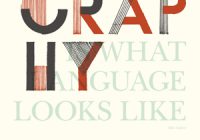Vector images versus Raster images; which is better and why? When do you use one or the other? Even better, what exactly is Raster and Vector? These are all legitimate questions and ones that are frequently asked.
First, what exactly is Raster and Vector? These are two different types of images that are used by digital artists. Most people are more familiar with both of these than they probably realize. Some may say that raster = photos and vector = digitally created images, but that’s not really true. While photographs are indeed raster images, not all raster images are photographs. In the same way, while vector images are created digitally, just because an image is digitally created, does not mean that it is necessarily vector.
Vector images are images that are created using vector based programs such as Adobe Illustrator or CorelDRAW.
They can be as simple as this,

or as complex as this.

Outlines
The way Vector programs create such images is by mathematical equations. This means that when you enlarge a vector image, the program multiplies the original equation. So, for example, if you are doubling the size of the image, the program will take the original equation, multiply it by 2 and, essentially, redraw the image with the new equation. Doing it this way, retains the same clarity regardless of size. So you can put the same image on a business card or a billboard and retain the clarity. In addition to clarity retention, vector file sizes, on a whole, are smaller file sizes than raster because the program only has to keep up with, and change, an equation.
Raster or bitmap images, on the other hand, use pixels, or minute areas of color to create an image. So whether it is scanned in or it is created from scratch in a pixel based program such as Photoshop or GIMP, when the image is enlarged the pixels are then increased in either size or number. This increase results in the original image data being spread over a larger area. Spreading the data over a larger area causes the image to lose clarity and detail. The increased data also increases the file size, thereby making your system run harder, and making transfer over the web difficult.

This is an example of a zoomed in Raster image.
We are still left with the question of which is better. The answer is that it really depends on what you’re doing. If you are editing photographs or wanting to add effects, then Raster handles those tasks much better, but if your goal is to create a versatile design, such as a logo, then Vector is by far superior.
Happy Creating,
-Austin




